The Dangers of Products Containing Sodium Lauryl Sulfate
Sodium Lauryl Sulfate:
Why You Must Steer Clear of Skincare
Products Containing SLS
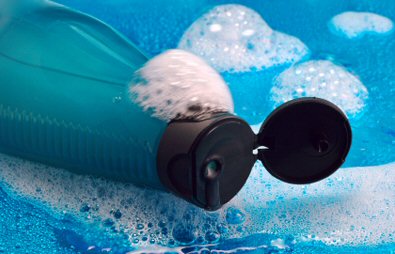 Sodium lauryl sulfate, abbreviated as SLS, is among the many substances used in
natural, organic, and inorganic skincare products that can have adverse effects
on the body. Skincare products can help rejuvenate, soften, and restore the tone
of your skin giving it a beautiful youthful look. These products can reduce
rapid aging of the skin while improving its appearance. However, skincare
products come in different forms; there are those labeled as 100% organic,
others labeled as simply “organic”, while there are those labeled as inorganic. Sodium lauryl sulfate, abbreviated as SLS, is among the many substances used in
natural, organic, and inorganic skincare products that can have adverse effects
on the body. Skincare products can help rejuvenate, soften, and restore the tone
of your skin giving it a beautiful youthful look. These products can reduce
rapid aging of the skin while improving its appearance. However, skincare
products come in different forms; there are those labeled as 100% organic,
others labeled as simply “organic”, while there are those labeled as inorganic.
What is sodium lauryl sulfate-SLS?
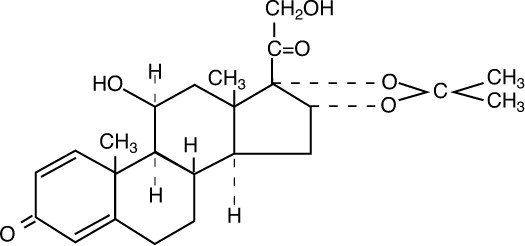
Sodium lauryl sulfate is a substance that is used as an emulsifier,
detergent, surfactant, and foamier in many cosmetic products. It is also used in
industrial cleaners. However, its use in cosmetics and skincare products has
received a lot of attention owing to studies that have been carried out on the
effects of this substance on the body. This substance is also a denaturant and
is classified as a moderate hazard to the body by Environmental Working Group (EWG).
Where is SLS used?
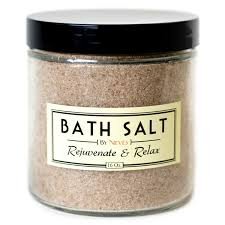 Sodium lauryl sulfate is used in industrial cleaners because of its ability
to remove stubborn stains and oils from surfaces. It has widely been used in
cosmetic products including shampoos, bleaching agents, hair color, scalp
treatment products, body wash, cleansers, toothpastes, bath salts, bath oils,
hand and liquid soaps, skin make up foundations and many other body care
products. It may be labeled as one of active ingredient in skin care products
among other substances like parabens, synthetic colors, fragrances,
diethanolamine (DEA) and triethanolamine (TEA). Sodium lauryl sulfate is used in industrial cleaners because of its ability
to remove stubborn stains and oils from surfaces. It has widely been used in
cosmetic products including shampoos, bleaching agents, hair color, scalp
treatment products, body wash, cleansers, toothpastes, bath salts, bath oils,
hand and liquid soaps, skin make up foundations and many other body care
products. It may be labeled as one of active ingredient in skin care products
among other substances like parabens, synthetic colors, fragrances,
diethanolamine (DEA) and triethanolamine (TEA).
The problem with cosmetic products is that there is no strict regulation that
governs the use of ingredients in these products. This is why some products
labeled as organic are actually using substances that could cause health
complications to consumers. It is very important to know what you are applying
on your skin. This is because substances that are absorbed through the skin can
even be more dangerous than the ones you eat or take orally.
The reason behind this is that when you eat something, it can be broken down
by enzymes in the saliva and the stomach and thus enable it to be excreted out
of the body. Contrary to this, when you put the substances on the skin or scalp,
they are absorbed directly into the bloodstream and do not undergo a filtering
process. Such chemicals can get straight to your organs and with time, you can
begin experiencing problems.
Why is SLS used in skincare Products?
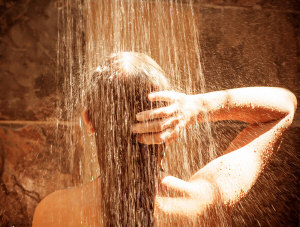 Sodium lauryl sulfate is applied in skincare products to make them work fast
and more effectively. It helps dissolve the skincare products so that they can
be absorbed fast in the skin. Sodium lauryl sulfate is used to produce lather in
soaps and toothpaste that helps in cleansing the body. SLS is used as an
emulsifying, dispersing, and wetting agent in creams and lotions. Sodium lauryl sulfate is applied in skincare products to make them work fast
and more effectively. It helps dissolve the skincare products so that they can
be absorbed fast in the skin. Sodium lauryl sulfate is used to produce lather in
soaps and toothpaste that helps in cleansing the body. SLS is used as an
emulsifying, dispersing, and wetting agent in creams and lotions.
Because some creams contain oil and water molecules, mixing these molecules
becomes difficult. When sodium lauryl sulfate is used in these cream and
lotions, it helps keep the concoction emulsified, meaning the droplets are
dispersed and not separated. SLS emulsifies lotions and creams that contain
water and oil molecules because it consists of water-loving hydrophilic head and
on the other side; it consists of an oil-loving hydrophobic tail. Therefore, it
positions itself at the water and oil interface and breaks up the surface
tension making these normally separated liquids to form an emulsion or mix
together.
This way, they can be easily applied on skin. Another reason why sodium
lauryl sulfate is used in cosmetic products is because it is an inexpensive
foaming or emulsifying agent. This allows cosmetic product manufacturers to save
money on product manufacturing costs. But why is sodium lauryl sulfate used in
products labeled as natural or organic?
The reason is simple; SLS is derived from coconut plants and it is actually
natural. However, the problem is that it undergoes a manufacturing process
before it is used in skincare products. Through a process known as ethoxylation,
the otherwise natural extract from coconut is contaminated with chemical
substances that are said to be carcinogen by-products such as 1,4-dioxane.
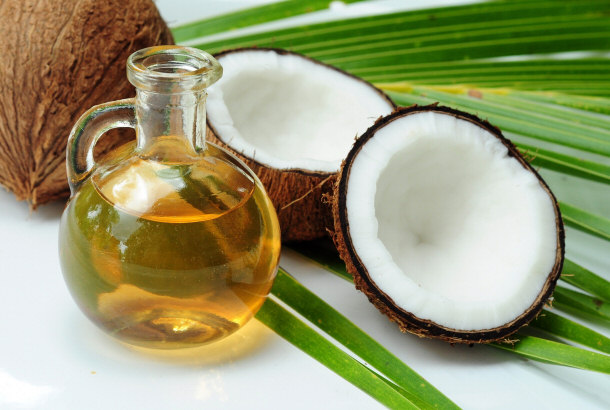
In
its natural form, SLS may not have the ability to cause cancer. And this has
been clarified in recent studies that do not link this substance with cancer.
Therefore, the real problem lies in the way the product is manufactured before
it can be used in skincare products. The product is chemically altered turning
the byproduct into a carcinogen.
What healthy risks are associated with sodium lauryl sulfate?
There is a lot of information on the internet that tries to elaborate the
dangers and benefits of sodium lauryl sulfate in skincare products. There are
many health risks linked to sodium lauryl sulfate, and they include irritation
of the eyes and the skin. The longer the SLS substance stays in contact with the
skin, the more likely it will cause irritation.
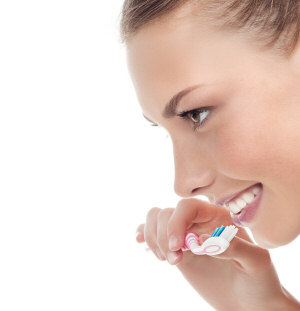 This means that sodium lauryl sulfate may be safe if it is in small
concentrations and used briefly on the body then rinsed right away such as when
brushing teeth and showering. However, for skincare products where SLS remains
on the skin for a long time such as lotions, cream products, and moisturizers,
it can penetrate the dermis and cause problems. This means that sodium lauryl sulfate may be safe if it is in small
concentrations and used briefly on the body then rinsed right away such as when
brushing teeth and showering. However, for skincare products where SLS remains
on the skin for a long time such as lotions, cream products, and moisturizers,
it can penetrate the dermis and cause problems.
Even in these lotions and creams, its concentration should not exceed 1
percent. The problem is that some manufacturers may not show how much SLS is in
their products. If its concentration level is not indicated on the cosmetic
product label, it could signify that the percentage is high.
Another effect SLS can cause on the body is drying the skin. Just like the
substance dissolves greases and oils in garages, it can also dissolve the
natural oils of the skin making it dry. Moreover, sodium lauryl sulfate damages
the immune system making your body unable to fight disease-causing microorganism
effectively. This substance can also cause inflammation of the skin when it
triggers separation of the skin layers.
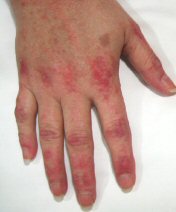
SLS has also been marked as a possible mutagen, which can lead to changes in
the genetic composition of cells. Studies done on bacteria have shown that this
substance can cause mutations to occur. In addition, it is also a denaturant and
it denatures proteins including the collagen of the skin. Besides, SLS causes
organic toxicity because it penetrates through the skin where it enters the
bloodstream without undergoing any breakdown or filtering.
With continuous use of cosmetic products containing this substance, even
small concentrations, it can build up and start causing organ failures. Other
risks associated with the substance are disruption of the endocrine system,
which can lead to hormonal changes. It can also cause reproductive and
developmental toxicity in expecting mothers.
Recent studies on whether SLS extracts can cause cancer have shown negative
results. However, one aspect that needs to be understood is that when SLS is
extracted from the plant, it undergoes an ethoxylation process before it is used
in cosmetics and this creates traces of contaminants like ethylene oxide and
1.4-dioxane, which are linked to cancer. Much of the research on cancer has been
done on natural extracts of SLS before they have undergone any chemical
transformation as it happens prior to being used in cosmetic products. This
implies that perhaps sodium lauryl sulfate, could be a possible contributing
factor to cancer in humans.
At times, you may not find the name “sodium lauryl sulfate” or abbreviations
“SLS” used in a cosmetic product labels and this does not mean that the
substance is not present. SLS can also go by other names such as sodium dodecyl
sulfate (A13-00356), sodium salt, and monododecyl ester. It is also referred to
as sulfuric acid, akyposal SDS, and sodium salt sulfuric acid. Other names
include aquarex ME, monododecyl ester sodium salt sulfuric acid, and aquarex
methyl. Therefore, you need to be very keen when you are examining the
ingredients in a cosmetic product. You are most likely to be applying a
dangerous chemical on your skin because of the many names that can be given to
one product.
Conclusion
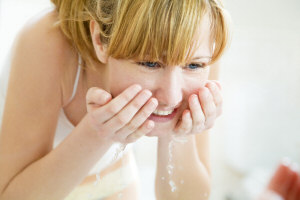 If you want to steer clear of sodium lauryl sulfate (SLS) and other harmful
substances like parabens, or the close associate of SLS known as sodium laureth
sulfate (SLES), you need to be very careful. Use products that are rated and
reviewed by Environmental Working Group (EWG) and those that are certified by
the United States Department of Agriculture (USDA). If you want to steer clear of sodium lauryl sulfate (SLS) and other harmful
substances like parabens, or the close associate of SLS known as sodium laureth
sulfate (SLES), you need to be very careful. Use products that are rated and
reviewed by Environmental Working Group (EWG) and those that are certified by
the United States Department of Agriculture (USDA).
Just because a product is labeled organic does not mean that it does not
contain harmful substances. And, because there is no regulation that governs the
use of natural ingredients in cosmetic products, this has created loopholes that
could lead to using products that may actually cause harm on people’s bodies. In
order to avoid using products that contain 1,4 dioxane, which is one of the
contaminants found in SLS, alongside ethylene oxide, the Organic Consumer
Association-OCA has recommended that you watch out for cosmetics that indicate
the use of ethoxylation.
The ethoxylation process is used by manufacturers of cosmetic products to
make SLS less harsh on body. Therefore, you can check for labels of ingredients
that consist of suffixes like “eth” such as laureth and myreth. You can also
search for ingredients whose names contain suffixes like “peg”. In addition,
ensure that you check the label for ingredients bearing the name “oxynol”,
"polyethylene glycol" and similar compounds.
Skin Care
Top 10 Reasons Why Women Wear Makeup
15 Enthralling Facts About Sunscreen
9 Unusual Beauty Treatments
DIY Body Scrub
Creating Your Own Natural Perfume And Body Spray
DIY Natural Acne Scar Treatment Serum
Herbal Face Mask
Fruits That Will Make Your Skin Glowing Healthier
How Can Teenagers Prevent Acne Breakouts
Why Your Facial Skin is the Most Sensitive to Skincare Products
The Dangers of Products Containing Sodium Lauryl Sulfate
How to Choose The Right Makeup
Laser Hair Removal for Unwanted Hair Growth
Fight Acne with Strawberries!
Don't Cut Your Cuticles - Use a Cuticle Stick!
How to Get Healthy Glowing Facial Skin Without Breaking the Bank |